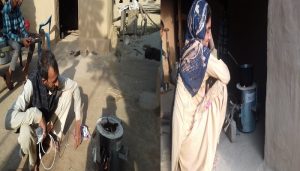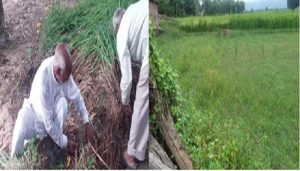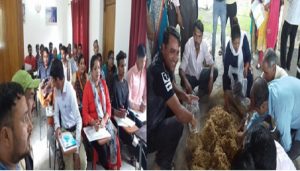


There is nothing in this world that is impossible to achieve if the will is strong and determined. Such is the story of one of the five village clusters adopted by IIT Delhi - Gandikhata. IIT Delhi adopted Gandikhata under the Unnat Bharat Abhiyan program initiated by MHRD. Apart from functioning as a National Coordinating Institute (NCI) for the Unnat Bharat Abhiyan, IIT Delhi is also functioning as a Regional Coordinating Institute (RCI) and Participating Institute (PI) for the program.
In order to demonstrate the capability of what this region can produce and provide to the nation while maintaining its very own economic conditions, a team of IITD from Unnat Bharat Abhiyan visited the place and surveyed for how various issues in the region can be addressed. IITD developed a model cluster in Gandikhata in convergence with the Surabhi Foundation. ONGC is the sponsor for the activities being conducted in this cluster. The initiative was meant for the upliftment and economic development of this cluster and hence a number of appropriate technologies have been demonstrated in this cluster including -
In Gandikhata, many villagers rely on biofuel to cook food which can be hazardous for all family members if continued for a long period. It may also lead to premature deaths. Hence, to provide a smokeless, clean cooking experience to the households in this cluster, a team at IIT Delhi designed a thermo-electric forced draft stove - TEG.

Pic: Villagers using smokeless chulha
Having liked by the households of the cluster, the UBA has provided 6 smokeless TEG cookstoves at one-third of its cost price to the villagers and will provide more as per the requirement.
Since this cluster covers a vast area of Rajaji National Park within, the villagers here were facing a threat to their crops from the forest animals, especially monkeys, blue bulls and elephants. The farmers had to employ extra manpower to save their cultivated land, which was increasing their losses and decreasing their interest in growing regular crops like sugarcane, pulses, and rice. To address this issue, IITD introduced Lemongrass cultivation to the farmers as an alternative option.
IITD, under Unnat Bharat Abhiyan, took the initiative to popularise this non-traditional crop for improving the socio-economic status of local farmers and provide them with a source of assured income in the long run. The idea was also to make unproductive land of this cluster the productive one with this easy crop. Hence, the land verification for the crop was done under the expert guidance of scientists from ICAR’s Indian Institue of Soil and Water Conservation, Dehradun and then saplings were distributed to the farmers. For better marketing, the interaction between farmers and buyers was also facilitated.

Pic: Lemongrass sapling distribution to farmers (left), Sapling sowed area (right)
As a part of livelihood generating activity promotion, Mushroom Cultivation was introduced to increase farmers’ income in the Gandikhata cluster. Residential and practical training was provided by the UBA’s IITD team, specifically for the Oyster mushroom variety. An exposure visit to Dehradun was also planned for the farmers in convergence with the Nursery and Food Processing Department, Govt of Uttarakhand to provide training on the subject.

Pic: Classroom training session in Dehradun at Nursery and Food Processing Department (left), Mushroom compost practical session in Ramnagar near Dehradun (right)
The fruitful result is that many farmers have agreed to prepare a dedicated mushroom cultivation room and racks. The trained farmers were provided with mushroom compost bags and seeds by IITD.